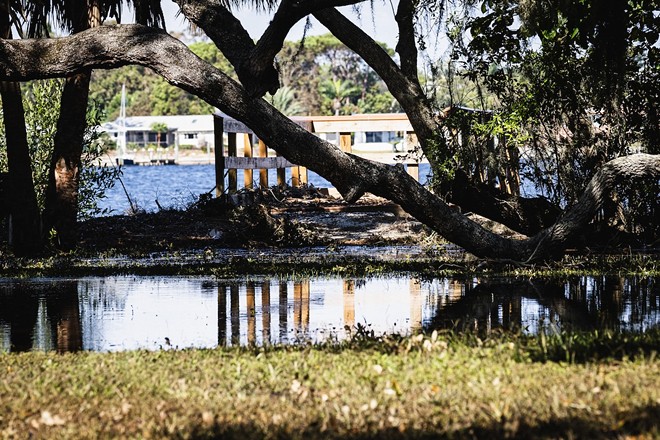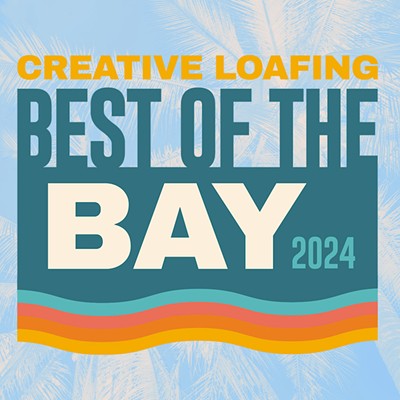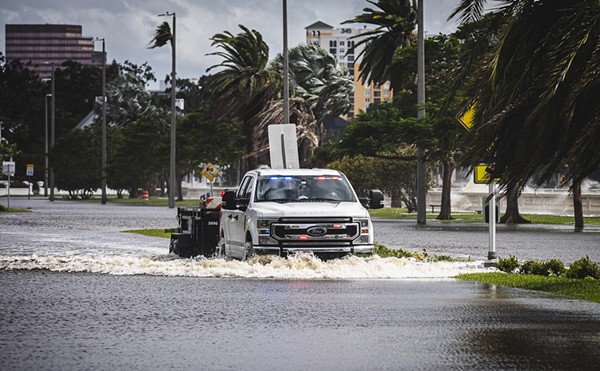Little Bayou Preserve is an ecological gem, and as we haul away the wreckage from Helene, a lesson for our harrowing new normal. The area used to be a channelized creek, an unofficial dump, a weedy patch of overgrowth. Guided by the legendary biologist Brandt Henningsen, the Southwest Water Management District graded the shoreline for mangroves; needing no other invitation, the mangroves colonized. An army of volunteers, led by the late, lanky and indefatigable activist Ray Wunderlich, culled invasive plants and transformed the wasteland into an urban forest and coastal swamp. The preserve illustrates what is proper, beautiful, safe and sane in a living shoreline.
Amidst the disaster, Mother Nature tells us what to do. And she is losing patience with her children on the coast. Around Little Bayou, private property nestles right up to water's edge. The "preserve" is the exception, not the norm. I had passed the little marsh hundreds of times without knowing what was there, on my way to the retirement home where my father died and where my mom still lives. There is no parking and the pull-off requires an awkward u-turn. You really only notice the preserve from the water and that is my point. Invisibility.
On calmer days, I've dropped a kayak at Bay Vista Park and paddled across the grass flats, north by the swanky homes along Bahama Shores (built on fill, a friend's inundated by Helene). An easier route starts at Grandview Park, shoots through the channel at Coquina Key, then south into the preserve.
Both routes showcase privatized waterfront. The scenery makes me surly.
House, lawn, seawall, dock.
House, pool, seawall, dock.
What's missing from these million-dollar properties? What most belongs: mangroves.
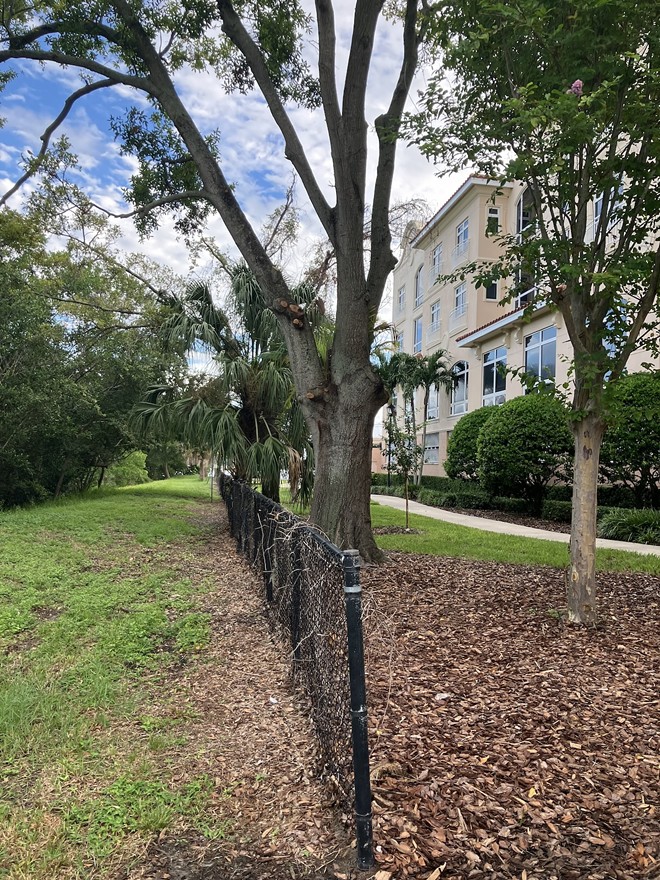
This is last century's coastline, a relic, and ground zero for looming disasters. During St. Petersburg's first land boom, developers dredged the channel, turning the marshy peninsula into Lewis Island (for owner Edson T. Lewis), later Coquina Key after a naming contest. Florida Power operated an employees club for a time, but for the most part, properties languished.
Then came the Mackle Brothers, the nation's ninth largest home builders, in the 1950s, promising the classic mid-century modern with "built in range and ovens, terrazzo floors, and tile roofs." It was “Howdy Doody Time” in Florida. A television for every living room. A car in the garage and an orange tree in the yard. And as for our estuaries and bays? Lost to dredge and fill.
The 1950s shoreline sticks with us today, hardscaped into our consciousness. Not because it's best practice, but because in red-blooded America, and for most of the past century in St. Petersburg, private property trumps sound urban planning. Andrew and I paddle south, Sunrise Drive to our right, Coquina Key's Neptune and Pompano Drives to our left. Do these streets not invite flooding by their very names?
House, pool, seawall, dock.
At a bend in the concrete, the Coquina Key channel widens into Little Bayou. I steer us south, to the sole patch of green around unprotected coast.
Anyone who cares about Tampa Bay (and who does not?) knows the ecological value of mangroves. Andrew and I chat up a fisherman, James, who likes to peddle his red Old Town along the preserve fringe. We ask James if he would prefer more native habitat, and he answers in a word: "Absolutely."
You don't have to be a conservation biologist to understand why. Salt-tolerant mangroves cradle marine life. Their leaves drop in the shallow muck, creating a microbiotic soup that kick starts the food chain. The red prop roots of these "walking trees" shelter the little critters, which feed the snapper and snook that James reels in from that sit-on-top Old Town."We have engineered the conditions of our own catastrophe."
tweet this
Equally important, mangroves protect our coasts. The roots stop erosion and absorb wave energy—far more effectively than steel or concrete. Consider the footage from our last storm. What's missing, but explanations? Waves crashing through the balustrades on Bayshore Boulevard. Treasure Island's main drag, first a raging river then a plowed dune. Storm surge sliding by the Gulfport Casino with an eerie familiarity and ease. USF's College of Marine Science, suddenly the College of Submarine Science. In not one of these scenes, a natural shoreline. The disaster porn feeds a loss of perspective.
Amidst our hubris and our hurt, we overlook a fundamental truth—that we have engineered the conditions of our own catastrophe.
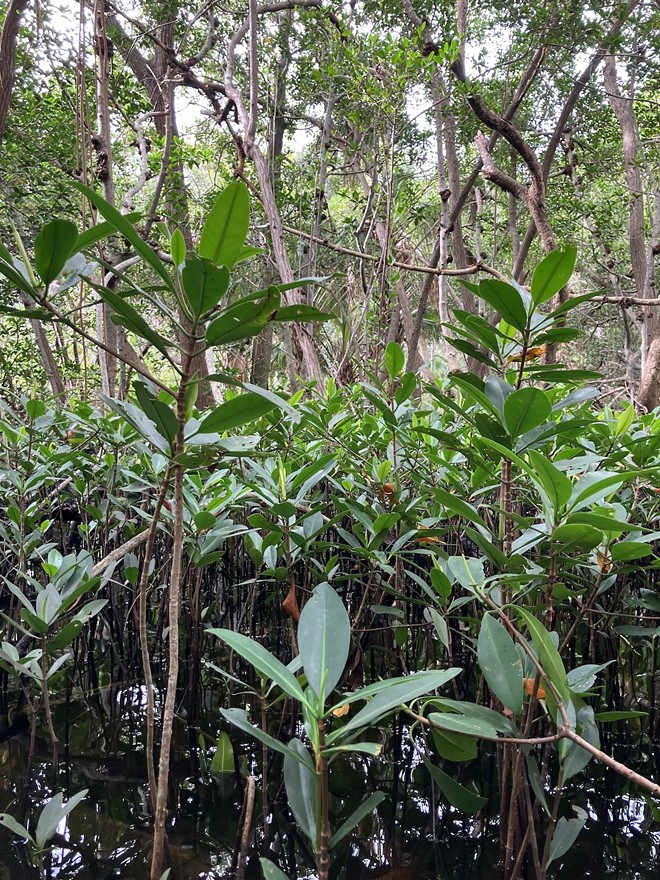
Seeking for honest answers, I asked around. (Honesty proves hard to come by.) Maya Burke, with the Tampa Bay Estuary Program, observes that dredge and fill areas like Coquina Key and Little Bayou altered the sea floor gradient. The sharp edges leave no space for propagules (those floating beans with the cute little feet) to catch root. Mangroves are messy, as even an enlightened homeowner (such as my dentist, Dr. Mendee Ligon) will concede. The "walking trees" trap litter and trimming requires a pricey arborist. Mangroves block the view. Before propagules can colonize a seawall or dock, most people agree, homeowners will "rip them out."
And so, having stripped away these natural shock absorbers against storm surge, we face the consequences. The panic. The floods. The thoughts and prayers. The soggy junk piling up at the foot of the driveway. The ruin. My kid's flooded truck—and with that loss, his income from Uber Eats. In our baptized communities, the smell of putrid mulch.
We cannot keep living this way. Andrew and I reach the preserve that Labor Day, and both before and after the storm, I visit Little Bayou again. Helene had turned my favorite bench sideways, but except for some debris on the forest floor, little has changed. My wife Julie and I right the bench to face the bay, crack open a pair of IPAs, and try to unpack the trauma. We take in the scene. Across the bayou, Coquina Key. To our left: house, lawn, seawall, dock; house, pool, seawall, dock. To the right, an old folks home, edged with podocarpus and St. Augustine grass.
In our relationship to the coasts, we have normalized the dysfunctional.
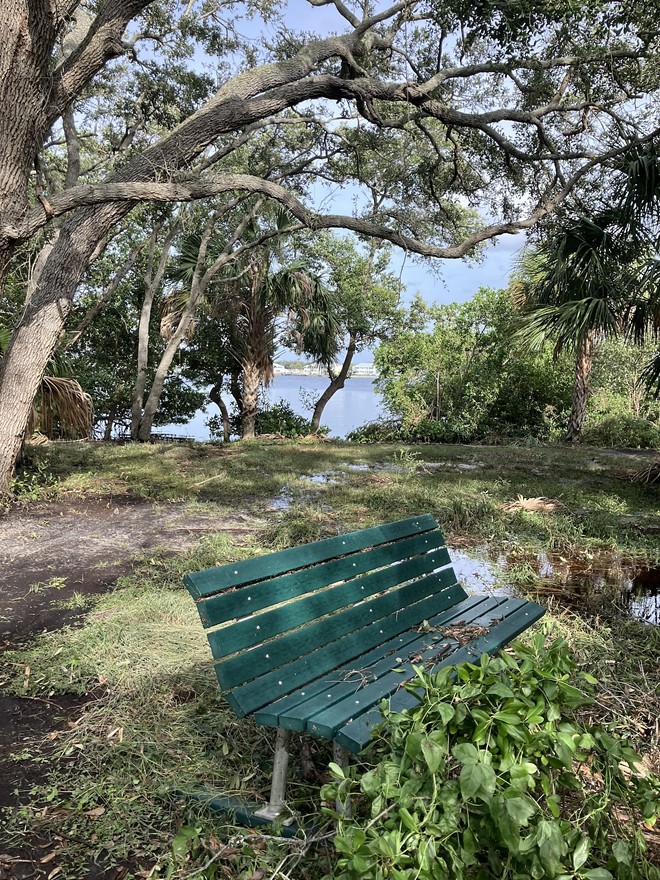
Probably not. Far more likely for Floridians to repeat the cycle, raise higher seawalls, assert the rights of private ownership, and get hit by still stronger storms spinning off the overheated Gulf, until the insurance market collapses, and the housing market tanks.
Enough. We cannot carry the arrogance of the last century into the present. Helene was a warning. Let's stop pretending it's "Howdy Doody" Time.
Thomas Hallock teaches English at the St. Petersburg campus of the University of South Florida. Along with Amanda Hagood, he has been writing #Creekshed columns for CL, asking "what are the human and natural stories that train into Tampa Bay?"
Thomas Hallock teaches English at the St. Petersburg campus of the University of South Florida. Along with Amanda Hagood, he has been writing #Creekshed columns for CL, asking "what are the human and natural stories that train into Tampa Bay?"
Subscribe to Creative Loafing newsletters.
Follow us: Google News | NewsBreak | Reddit | Instagram | Facebook | Twitter

